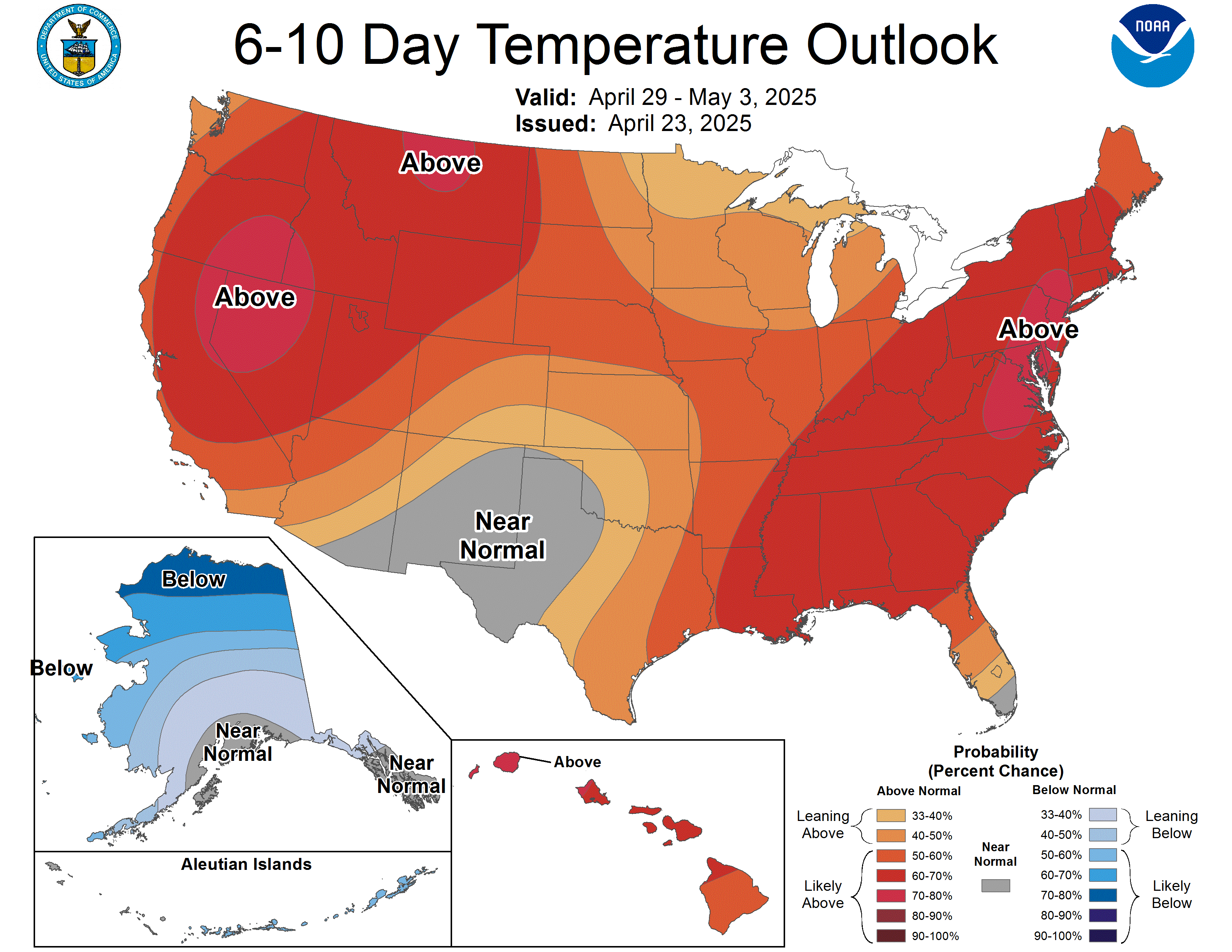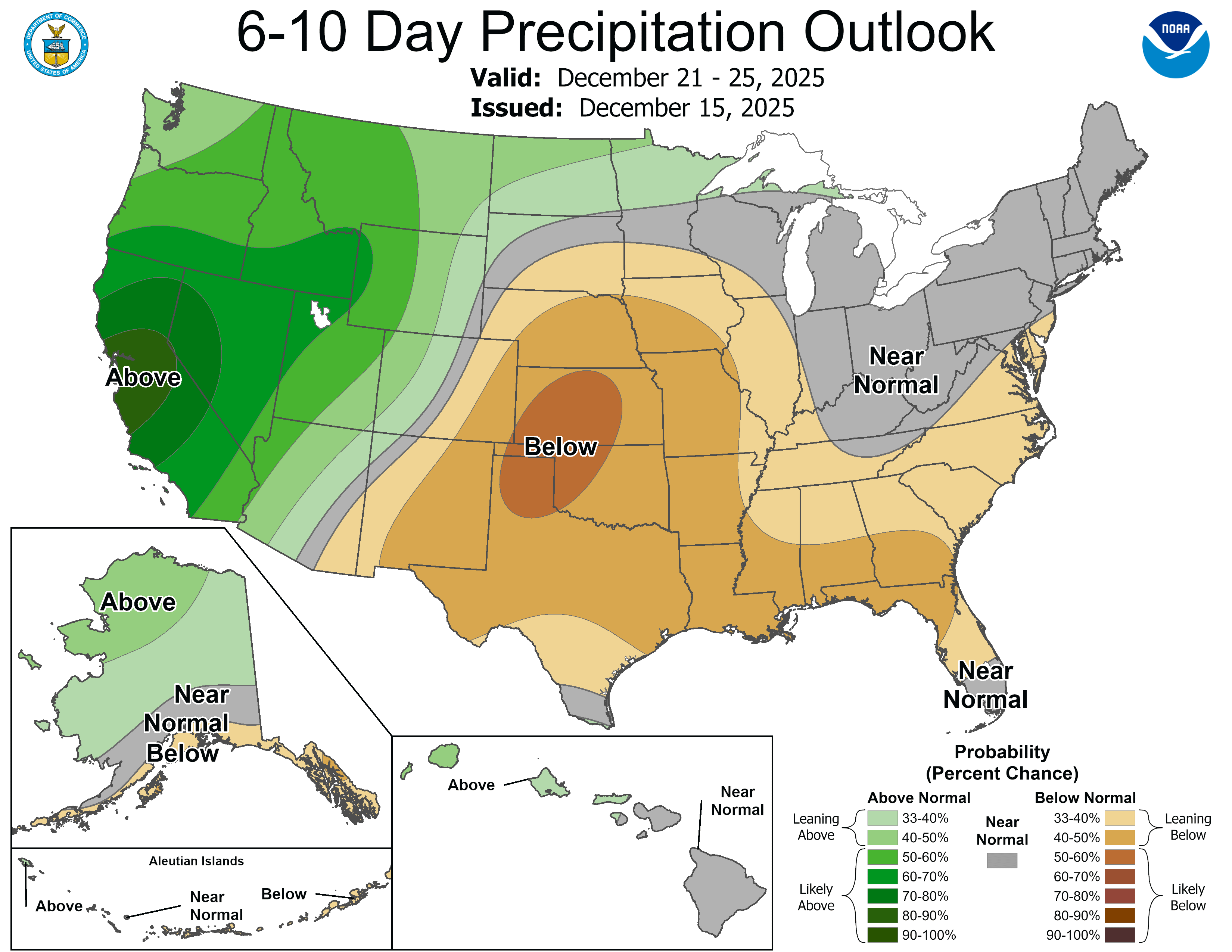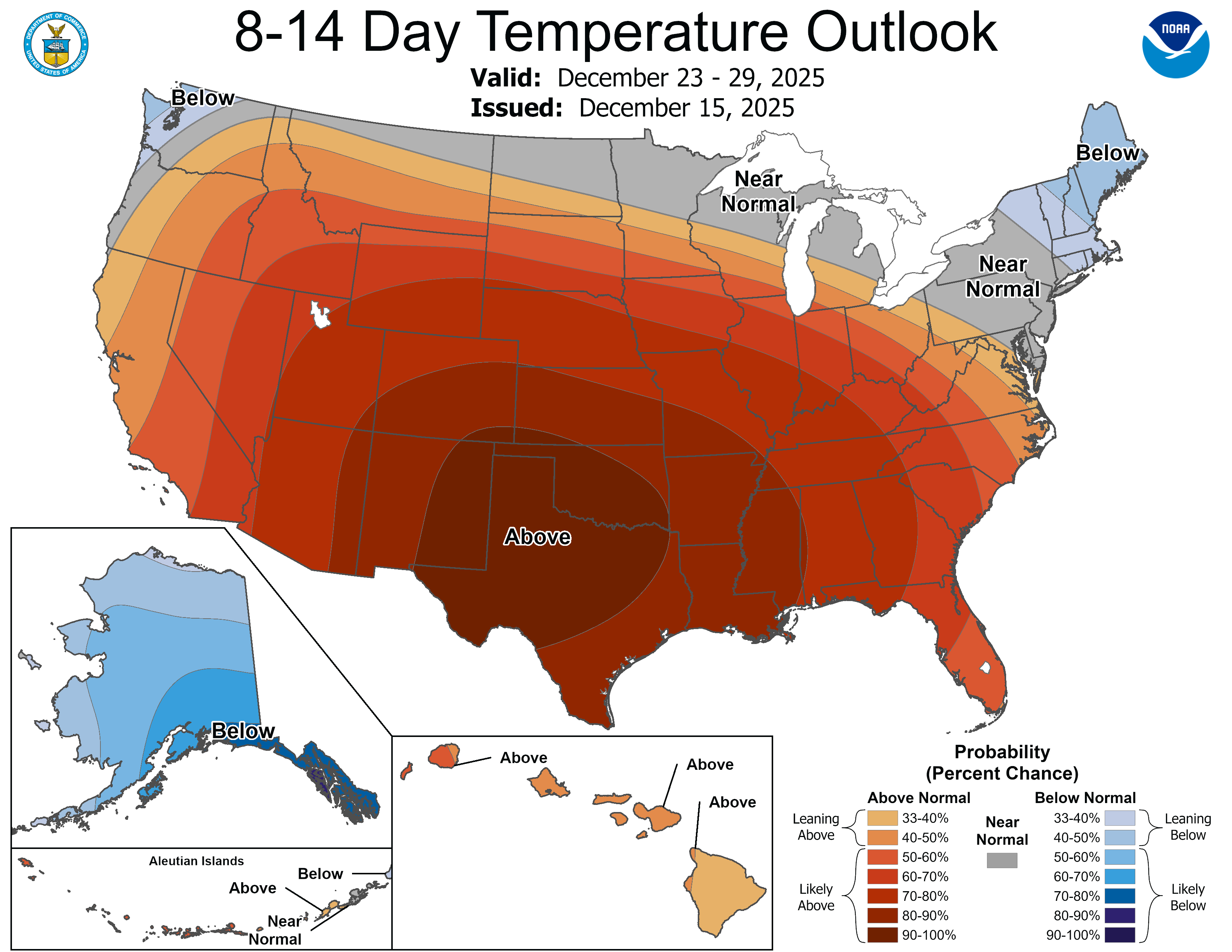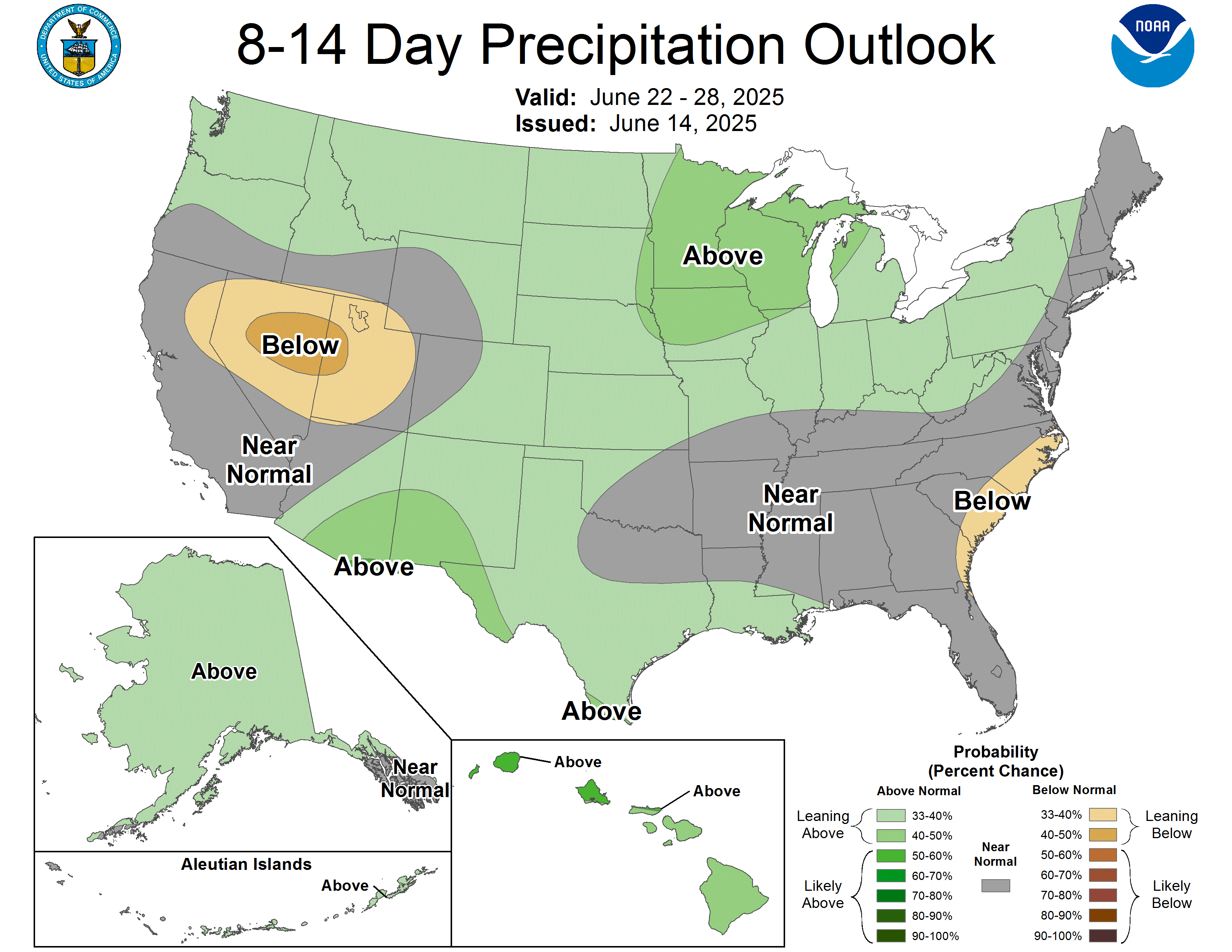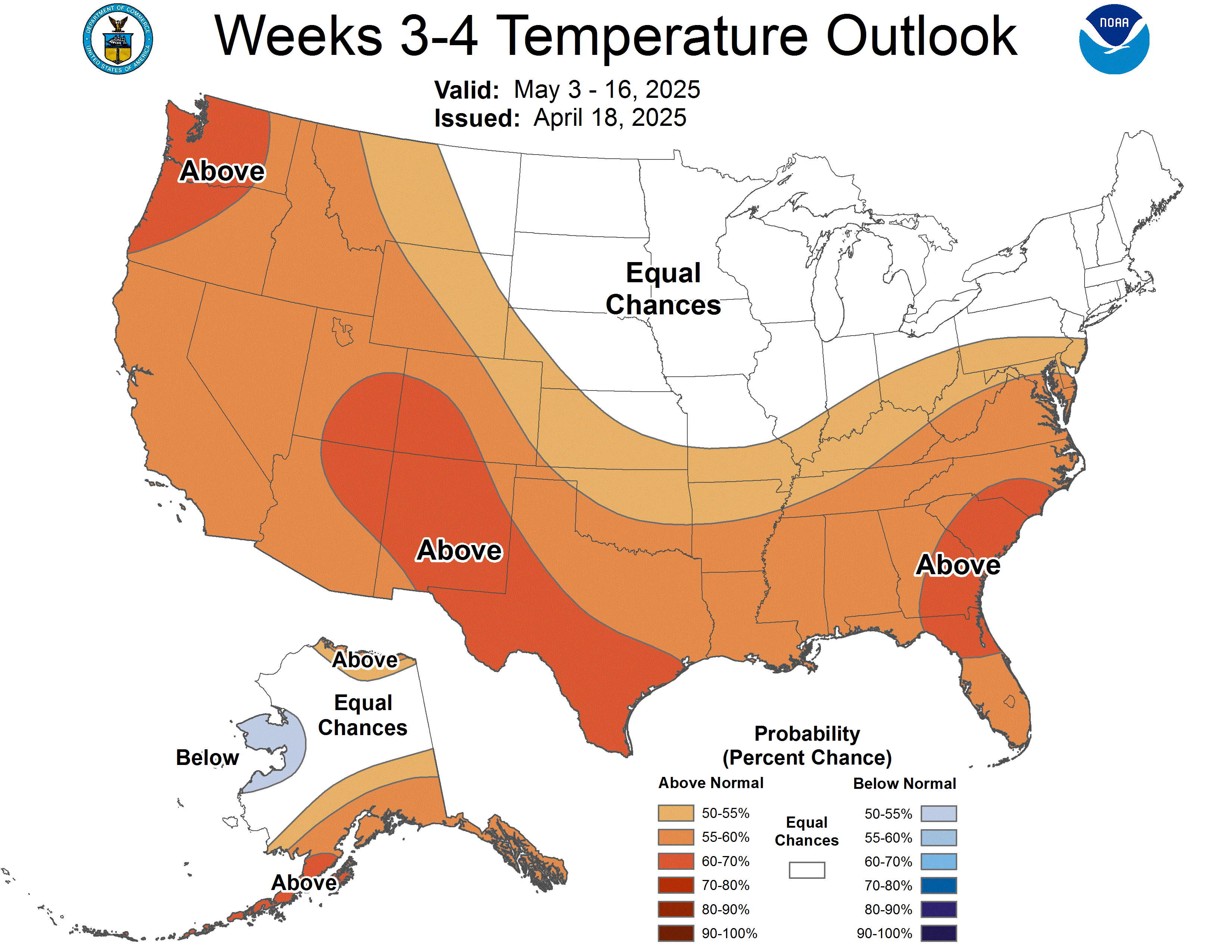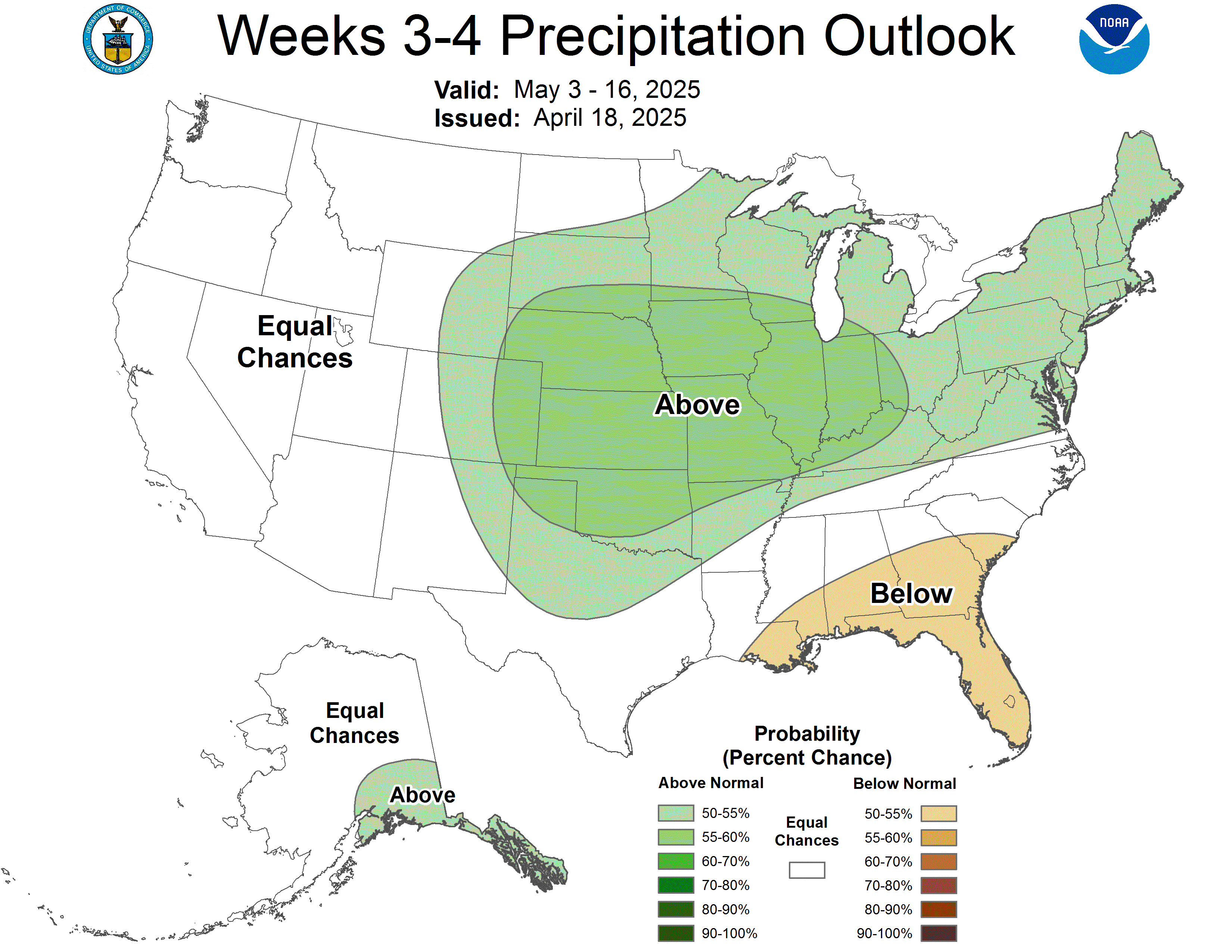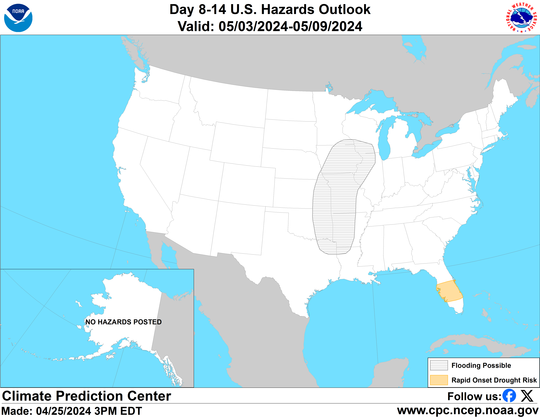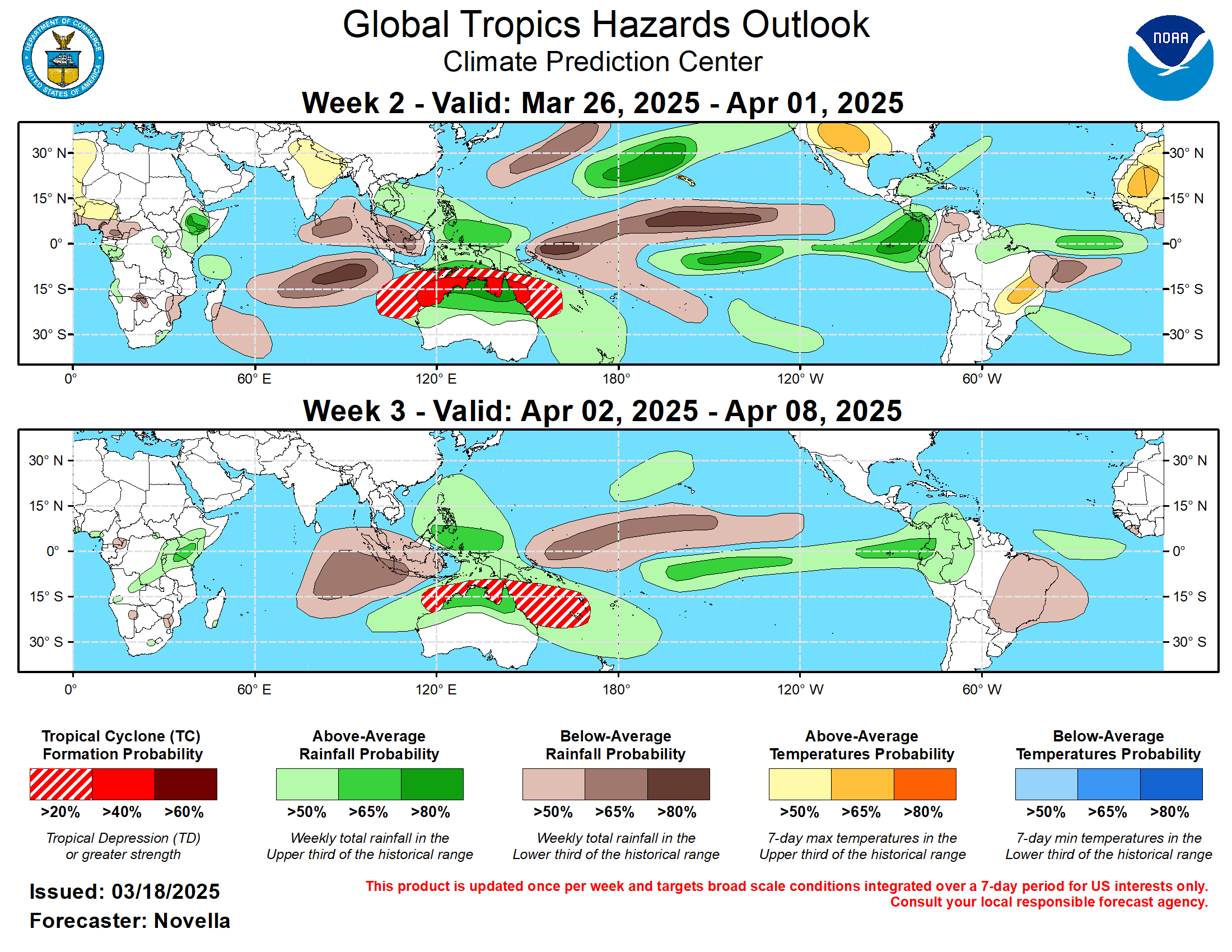This article focuses on what we are paying attention to in the next 48 to 72 hours. The article also includes weather maps for longer-term U.S. outlooks (up to four weeks) and a six-day World weather outlook which can be very useful for travelers.
First the NWS Short Range Forecast. The afternoon NWS text update can be found here after about 4 p.m. New York time but it is unlikely to have changed very much from the morning update. The images in this article automatically update.
Short Range Forecast Discussion
NWS Weather Prediction Center College Park MD
Wed Feb 05 2025
Valid 12Z Wed Feb 05 2025 – 12Z Fri Feb 07 2025…Unsettled weather to persist across the Western U.S. through the end of
the week including a new threat of heavy rainfall for California on
Thursday……Winter storm to impact the Midwest and Great Lakes region through the
Ohio Valley, Mid-Atlantic and Northeast with a combination of snow, sleet
and freezing rain later today through Thursday……Record high temperatures are expected across much of the Southern U.S.
over the next few days…A persistent deep layer low center and associated trough axis will
continue to provide a general fetch of deeper layer onshore flow and
precipitation for the Pacific Northwest and the northern Rockies going
through today and tonight. This will include additional accumulating
snowfall across the higher terrain with portions of the Cascades along
with the Sawtooth, Bitterroots and Tetons likely to see an additional 6 to
12+ inches of snow. Meanwhile, a new storm system offshore of the West
Coast will approach California on Thursday and bring a new atmospheric
river surge into the coastal ranges as well as the Central Valley and
Sierra Nevada going through Thursday night and Friday morning. Heavy
rainfall is expected with some potential for additional localized flooding
concerns. Over the higher terrain of the Sierra Nevada, heavy snowfall is
expected with as much as 1 to 3 feet of snow expected with this next
system as it moves inland. This new surge of Pacific moisture will also
lead to a new round of very heavy snowfall for the northern Rockies with
an additional 1 to 2+ feet of accumulating snow possible through Friday.
Some of this will also begin to eject east out into the northern Plains to
end the week.Meanwhile, farther east from the Midwest through the Great Lakes region
and into the Mid-Atlantic and Northeast, there will be arrival of a new
winter storm later today through Thursday which will bring a rather
widespread swath of locally heavy snow, sleet and freezing rain. The
heaviest snowfall with several inches of accumulation expected should
focus across the Upper Midwest and the U.P. of Michigan along with some
interior portions of the Northeast involving New York and the central and
northern parts of New England. South of here across the Ohio Valley and
the Mid-Atlantic region, the cold air that the precipitation will be
encountering with be notably more shallow, and this will be conducive for
sleet and freezing rain. Locally significant ice accumulations will be
possible with a 0.25″+ of ice accumulation, and this will lead to
hazardous travel conditions. Scattered power outages and tree damage will
be possible from the weight of the ice.Cold air will be generally well entrenched for the remainder of the week
across the northern Plains and the Pacific Northwest which will maintain
below normal high temperatures. Some of the coldest air will continue to
be over Montana where highs will struggle to get above zero. Over the
southern U.S., and to the south of a strong frontal zone, very warm
temperatures will be pooled in a general west to east fashion spanning the
Four Corners region eastward across the southern Plains and most of the
Gulf Coast states. High temperatures will locally reach well into the 80s,
and these temperatures will be as much as 20 to 30+ degrees above normal.
To get your local forecast plus active alerts and warnings click HERE and enter your city, state or zip code. If the Hazards Outlook is not updated click here but remember it does not update during the weekend.
Learn about wave patterns HERE.
Then, looking at the world and of course, the U.S. shows here also. Today we are looking at precipitation.
Please click on “Read More” below to access the full Daily Report issued today.
| Notices: What would you like to learn about? Please provide that to me via the comment section at the end of the article. |
Now more detail on the 48-Hour Forecast (It is a 48 to 72 Hour Forecast actually)
Daily weather maps. The Day 1 map updates twice a day and the Day 2 and 3 maps update only once a day. These maps update automatically. But if that does not happen, you can get updates by clicking HERE
TODAY (or late in the day the evening/overnight map will appear) (Key to surface fronts shown on maps and you will then also be able to insert a city name or zip code and get a local NWS forecast).
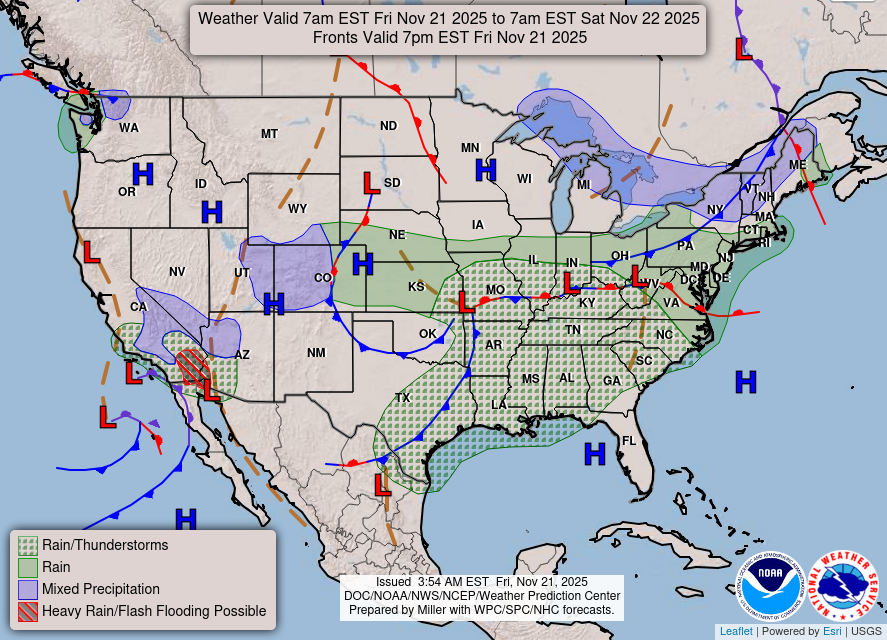
TOMORROW
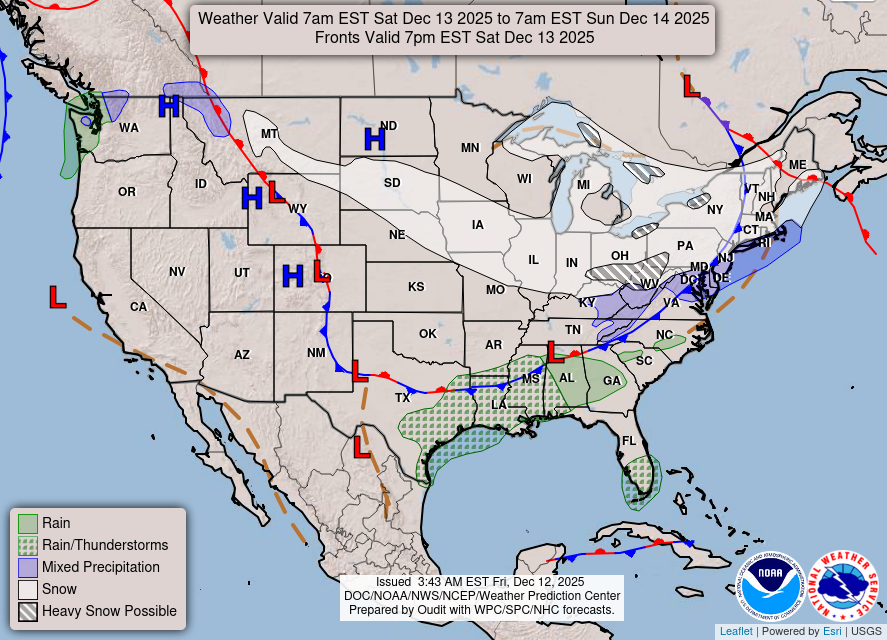
NEXT DAY
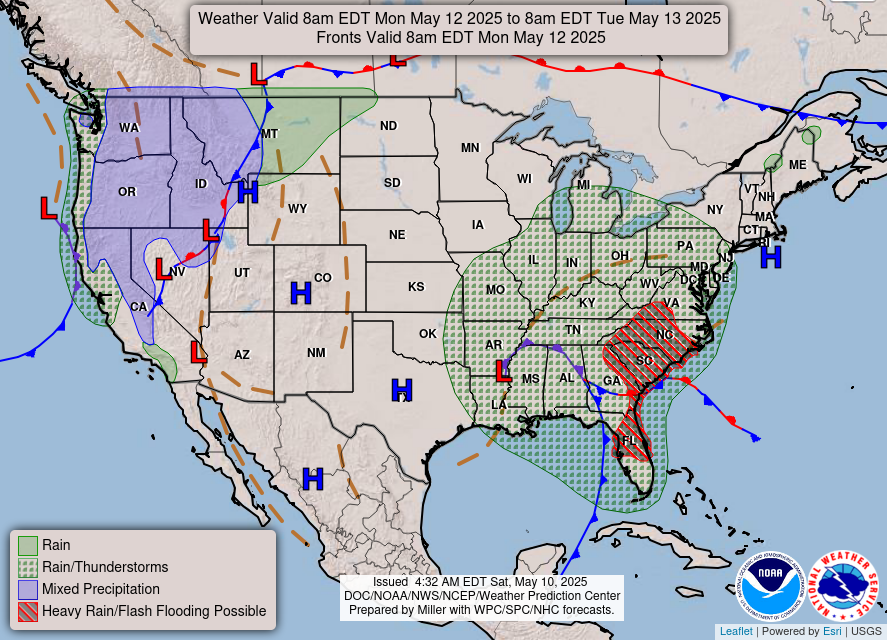
We have a new animation of the forecast which shows how things may play out over the next 60 hours. To update click ANIMATION. Doing so will get you to the dashboard. You can then step through the animation or hit LOOP on the upper right of the display. You will have to hit the back arrow ← at the top left on your computer to get back into this article. It is a little more trouble than before but I think NOAA scrapped the animation routine I was using so we have to keep up with “progress”.
The NWS Climate Prediction Center’s: Watches, Warnings, and Advisories plus other information can be found HERE. That takes you to the NWC Severe Weather Site. From there you can select among many categories of information. Remember to hit the back arrow ← at the top left of your screen to return to this article.
ATMOSPHERIC RIVERS
This tells us what is approaching the West Coast. Click HERE to update If I have not gotten around to doing the update. Here is some useful information about Atmospheric Rivers.

Below is the current five-day cumulative forecast of precipitation (Updates can be found HERE)
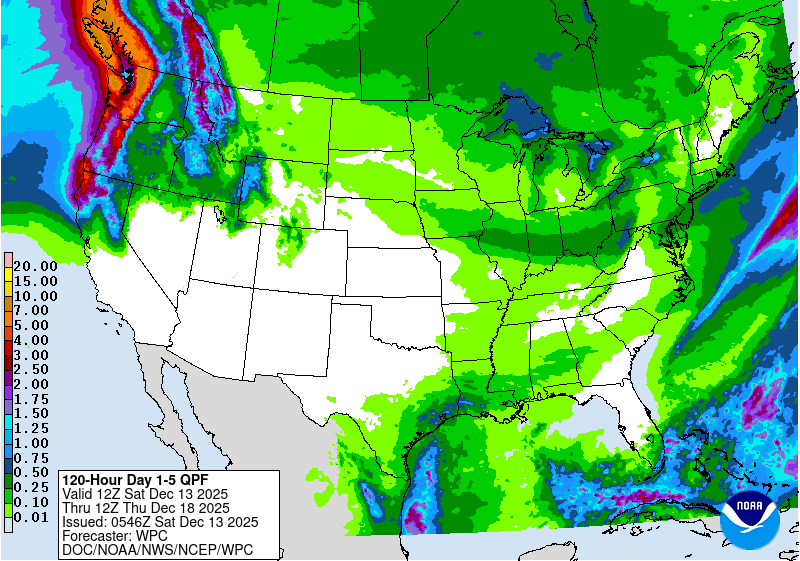
Ski SnowReports
New Feature – Ski Reports. It is difficult to find reports that auto-update on-screen (and they are very long) but these links will get you to them – If you have additional suggestions make them in the comments section after every Econcurrents Article and we may add those links. We will try to not have too much overlap as that can add to the confusion.
Snow Forecasts. And remember this shows natural snow. Ski resorts also make their own snow.
Day 1
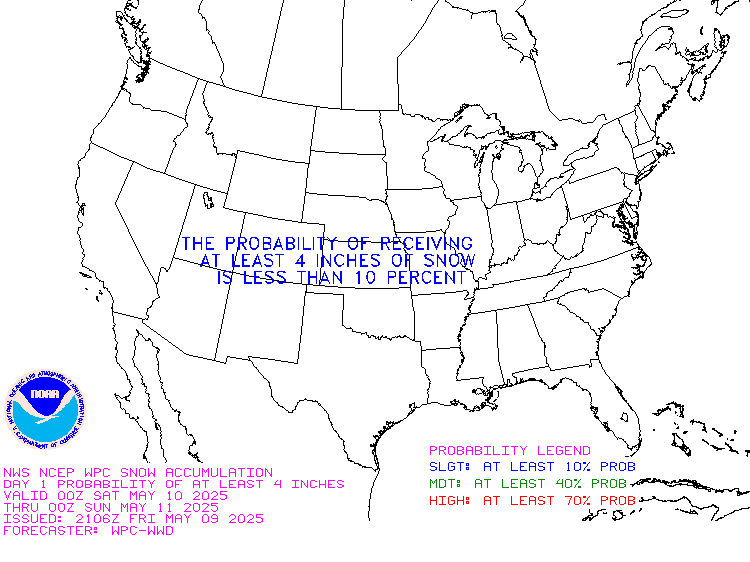
Day 2
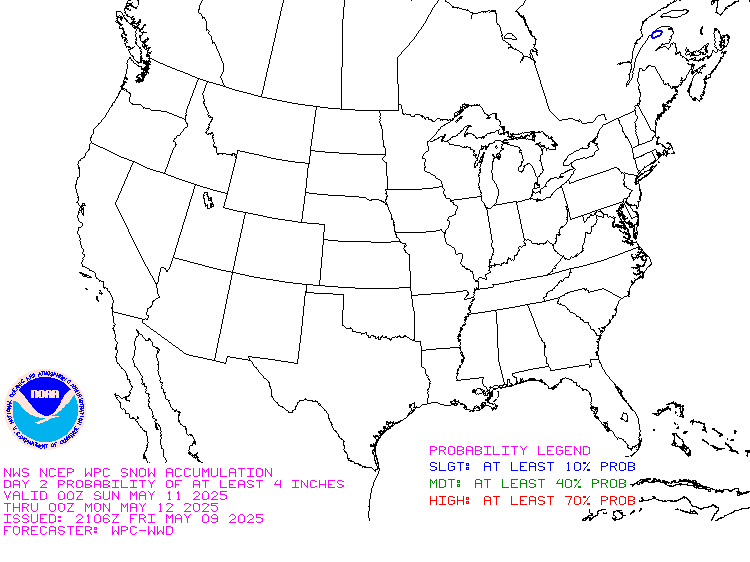
Now we look at Intermediate-Term “Outlook” maps for three time periods. Days 6 – 10, Days 8 – 14, and Weeks 3 and 4. An outlook differs from a forecast based on how NOAA uses these terms in that an “outlook” presents information as deviation from normal and the likelihood of these deviations.
Below are the links to obtain updates and additional information. They are particularly useful if you happen to be reading this article significantly later than when it was published. I always try to provide readers with the source of the information in my articles. These links may also be useful for those viewing this article on a cell phone or other small screen.
| Days 6 – 10 (shown in Row 1) | Days 8 – 14 (Shown in Row 2) | Weeks 3 and 4 (Shown in Row 3 but updates only on Fridays) |
| https://www.cpc.ncep.noaa. gov/products/predictions/610day/ | https://www.cpc.ncep .noaa.gov/products/predictions/814day/ | https://www.cpc.ncep.noaa.gov/products/predictions/WK34/ |
Showing the actual maps. They should now update automatically. The Week 3 – 4 Outlook only updates on Fridays. So below is what I call the Intermediate-term outlook. On Fridays, it extends out 28 Days. That declines day by day so on Thursday it only looks out 22 days until the next day when the Week 3 – 4 Outlook is updated and this extends the outlook by one additional week.
| 6–
10
|
|
|
| 8–
14 |
|
|
| 3–
4 |
|
|
HAZARDS OUTLOOKS
Click here for the latest complete Day 3 -7 Hazards forecast which updates only on weekdays. Once a week probably Monday or Tuesday I will update the images. I provided the link for readers to get daily updates on weekdays. Use your own judgment to decide if you need to update these images. I update almost all the images Friday Night for the weekend edition of this Weather Report. So normally readers do not need to update these images but if the weather is changing quickly you may want to.
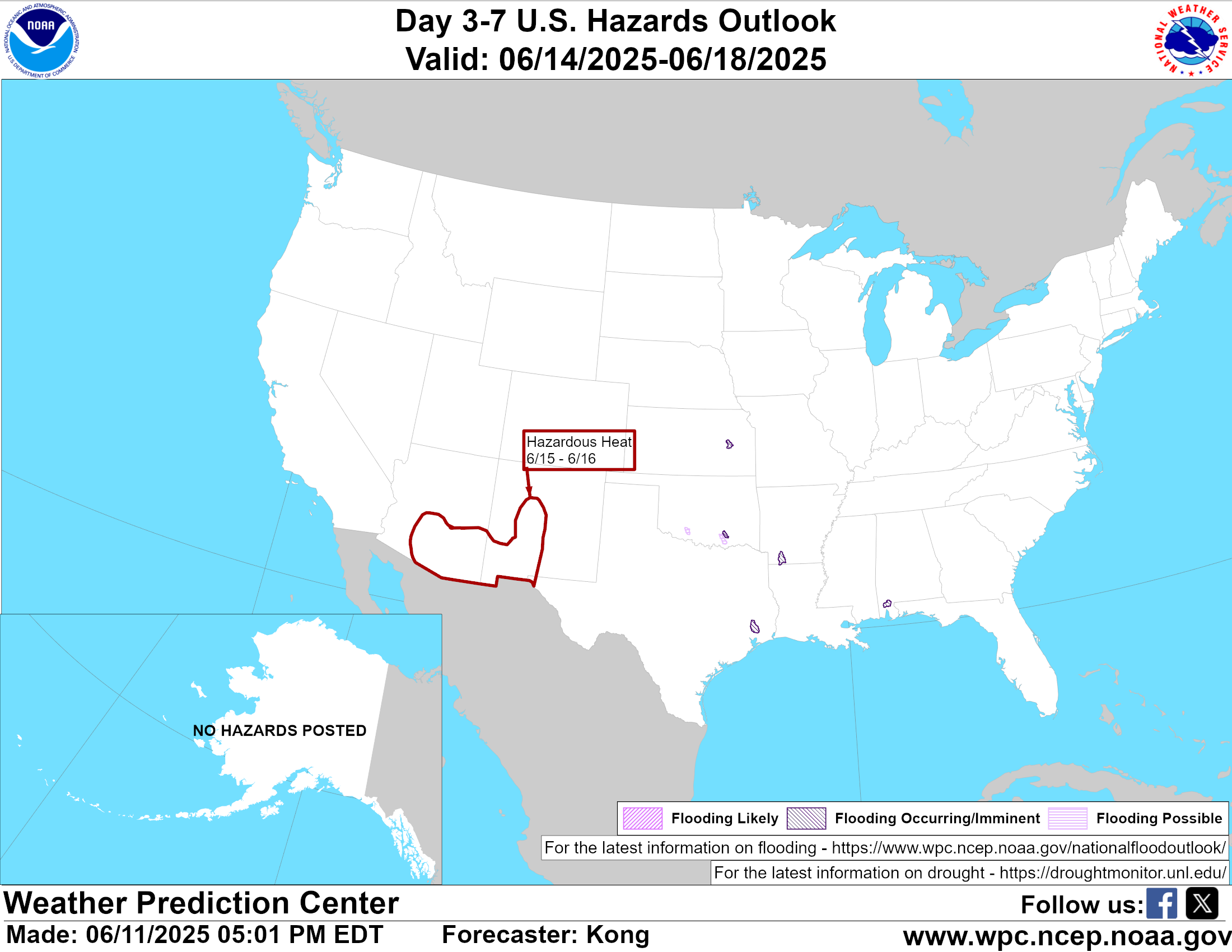
Temperature month to date can be found at https://hprcc.unl.edu/products/maps/acis/MonthTDeptUS.png
Precipitation month to date can be found at https://hprcc.unl.edu/products/maps/acis /MonthPNormUS.png
World Forecast [that website is has been intermittent so be patient]
Below are the Day 1 -3 and 4-6 forecasts for temperature and precipitation. Updates and much additional information can be obtained HERE
World Temperature Anomalies

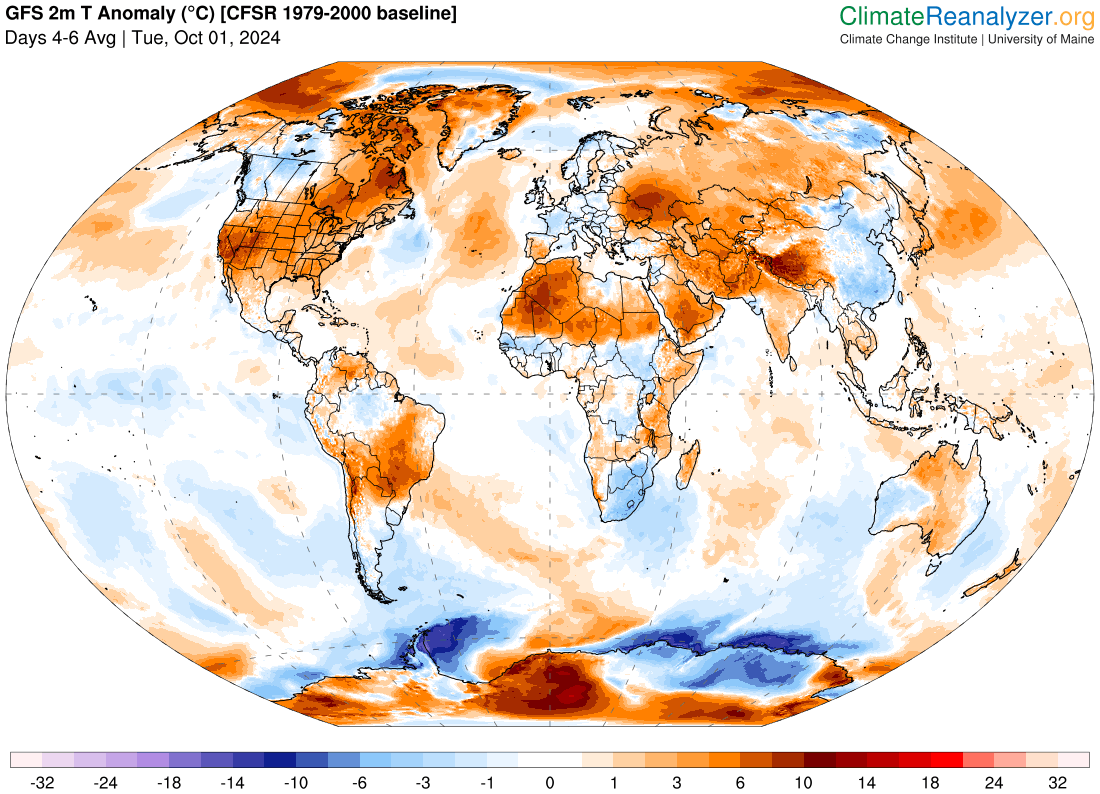
World Accumulated Precipitation
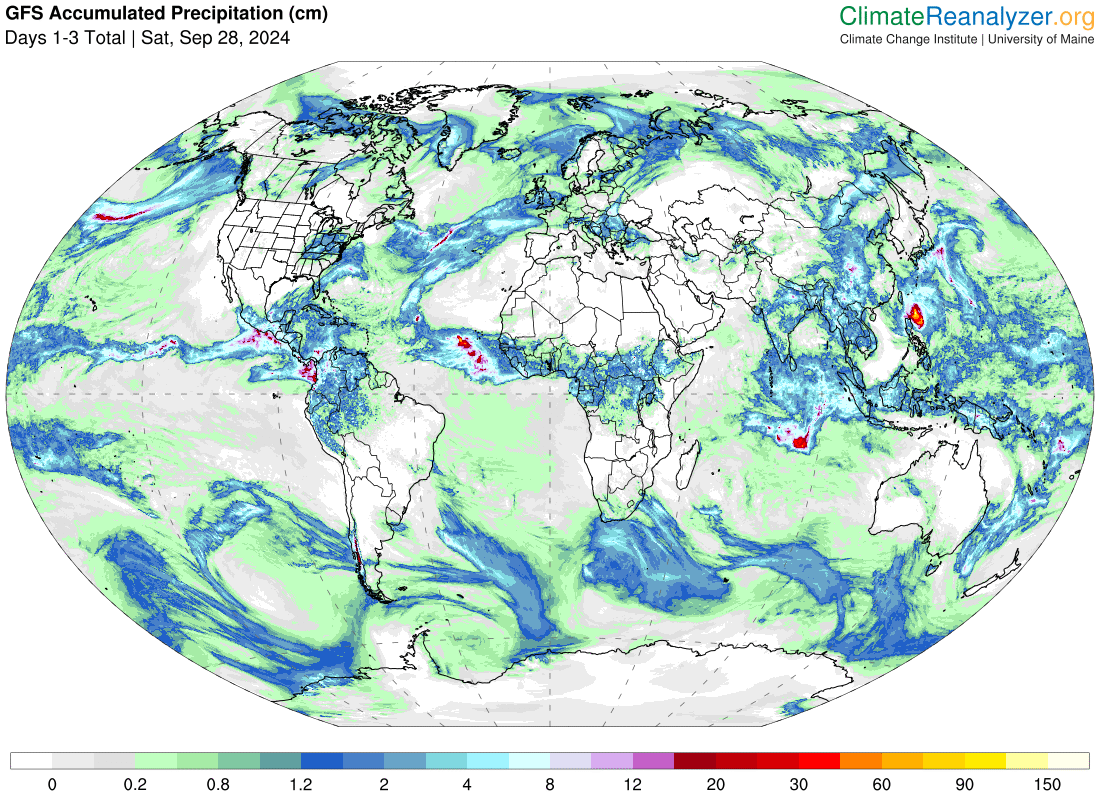
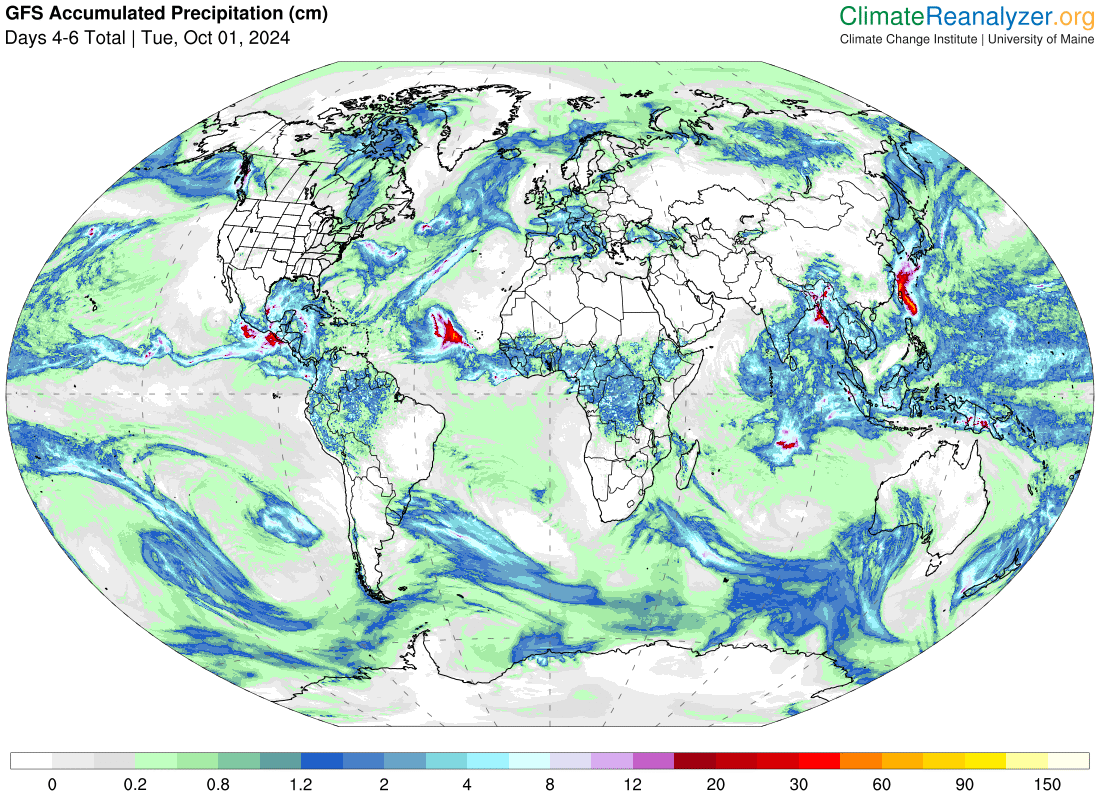
This information is provided by the University of Maine. They draw upon many different sources. There is a lot of information available at the link provided. I have just provided two useful forecasts. There are probably over a hundred different forecasts available from this source.
Worldwide Tropical Forecast (This is a NOAA Product)
This graphic updates on Tuesdays) If it has not been updated, you can get the update by clicking here Readers will only have to do that if they are reading this article much later than the date of it being published.
Information on Tropical Storms can be found HERE. Western Pacific information can be found HERE. Note that unless there is an out-of-season storm the below images will not update until the National Hurricane Center starts their seasonal update of these maps on June 1. I include them simply because there can be an out-of-season event in which case it should show up in these maps.
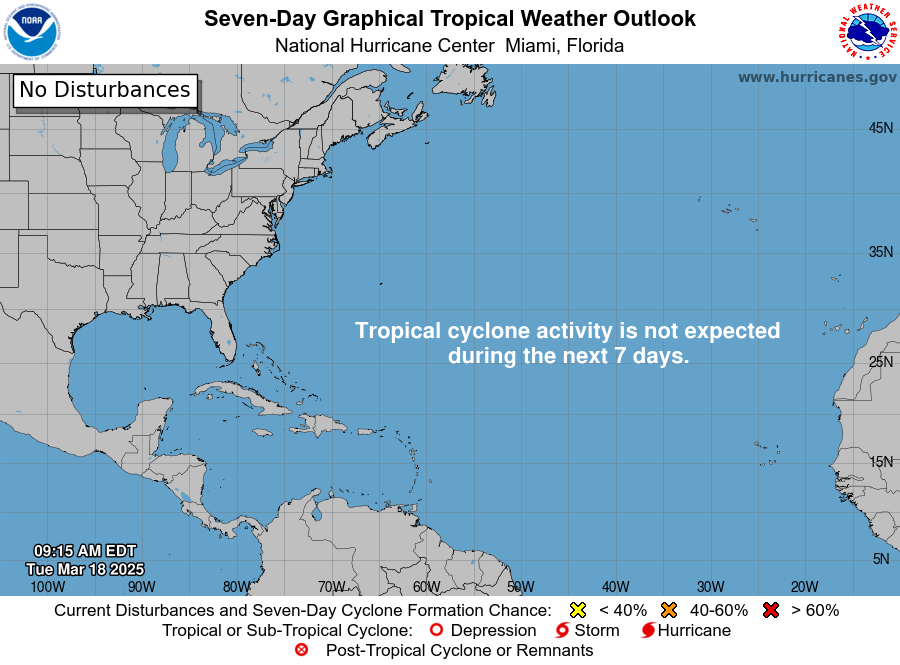
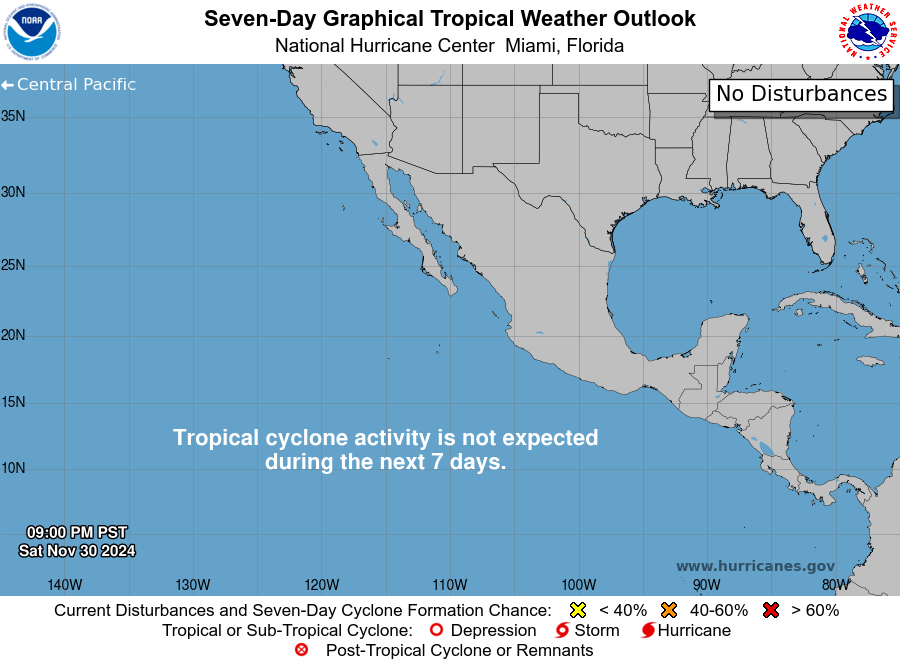
–
| I hope you found this article interesting and useful. |

